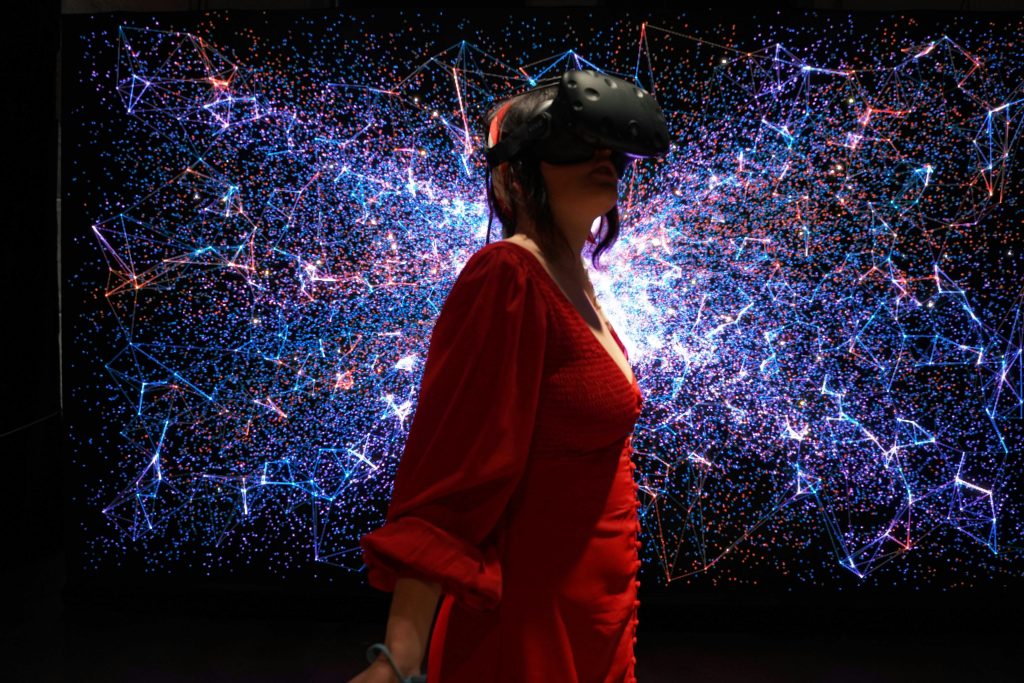Extended Reality (XR), an umbrella term encompassing Virtual Reality (VR), Augmented Reality (AR), and Mixed Reality (MR), is transforming the landscape of training and education across various industries. By creating immersive, interactive experiences, XR technologies are enabling more effective, engaging, and safe learning environments. This article explores the applications, benefits, and challenges of using XR for training purposes.
Understanding XR Technologies in Training
XR technologies offer a spectrum of immersive experiences that can be tailored to specific training needs:
Virtual Reality (VR)
VR provides fully immersive experiences, transporting users to entirely virtual environments. In training, VR is particularly useful for:
- Simulating dangerous or hard-to-replicate scenarios
- Providing hands-on experience in a safe, controlled environment
- Allowing trainees to practice complex procedures repeatedly
Augmented Reality (AR)
AR overlays digital information onto the real world, enhancing the user’s perception of their environment. AR in training can:
- Provide real-time guidance and information during tasks
- Enhance on-the-job training with digital overlays
- Offer interactive manuals and instructions
Mixed Reality (MR)
MR blends elements of both VR and AR, allowing virtual objects to interact with the real world. In training, MR can:
- Create more realistic simulations that interact with physical environments
- Enable collaborative training sessions with both virtual and real elements
- Provide advanced visualization of complex systems and processes
Applications of XR in Various Industries
XR training is being adopted across numerous sectors:
Healthcare
- Surgical training simulations
- Patient care and empathy training
- Anatomy visualization and medical procedure practice
Manufacturing and Industry
- Equipment operation and maintenance training
- Assembly line process simulations
- Safety procedure training
Aerospace and Aviation
- Flight simulations for pilots
- Spacecraft operation training
- Maintenance and repair procedures for complex machinery
Military and Law Enforcement
- Combat simulations and tactical training
- Crisis response and decision-making scenarios
- Equipment operation in high-stress environments
Education and Skill Development
- Interactive learning environments for various subjects
- Vocational training for trades and technical skills
- Soft skills development through simulated social interactions
Benefits of XR Training
The adoption of XR for training offers several advantages:
Enhanced Engagement and Retention
Immersive experiences create stronger emotional connections to the material, leading to better retention of information and skills.
Safe Practice of High-Risk Scenarios
XR allows trainees to experience dangerous situations without physical risk, improving preparedness for real-world challenges.
Cost-Effective and Scalable
While initial development costs can be high, XR training can be more cost-effective in the long run, especially for large-scale training programs.
Consistent Training Experience
XR ensures that all trainees receive the same high-quality training experience, regardless of location or instructor.
Data-Driven Insights
XR systems can collect detailed data on trainee performance, enabling personalized learning paths and objective assessment.
Accessibility and Flexibility
XR training can be conducted remotely, making it accessible to a wider audience and allowing for flexible scheduling.
Challenges and Considerations
Despite its potential, XR training faces several challenges:
Technology Adoption and Integration
Integrating XR into existing training programs requires significant changes to infrastructure and methodologies.
Development Costs
Creating high-quality XR content can be expensive and time-consuming, requiring specialized skills and resources.
Hardware Limitations
Current XR hardware may have limitations in terms of comfort, battery life, and processing power, especially for extended use.
Motion Sickness and User Comfort
Some users may experience discomfort or motion sickness in VR environments, necessitating careful design considerations.
Content Updates and Maintenance
XR training content needs regular updates to remain relevant and effective, requiring ongoing investment.
The Future of XR Training
As XR technologies continue to evolve, several trends are shaping the future of training:
AI-Enhanced XR
Integration of artificial intelligence to create more adaptive and personalized training experiences.
Haptic Feedback and Sensory Expansion
Incorporation of advanced haptic technologies to provide more realistic tactile feedback in simulations.
5G and Cloud XR
Leveraging 5G networks and cloud computing to enable more powerful, real-time XR experiences with lighter, more comfortable hardware.
Social and Collaborative XR
Development of multi-user XR environments for team-based training and global collaboration.
XR for Soft Skills and Emotional Intelligence
Expanding the use of XR beyond technical skills to include interpersonal and emotional intelligence training.
Extended Reality is poised to revolutionize the way we approach training and skill development across industries. By offering immersive, interactive, and safe learning environments, XR technologies have the potential to significantly enhance the effectiveness and efficiency of training programs.
As the technology continues to mature and become more accessible, we can expect to see wider adoption and more innovative applications of XR in training. Organizations that embrace these technologies early stand to gain a competitive advantage in developing a highly skilled and adaptable workforce.
The future of training is increasingly virtual, augmented, and mixed, offering exciting possibilities for learners and trainers alike. As XR continues to evolve, it will play a crucial role in preparing individuals and organizations for the challenges of an ever-changing world, bridging the gap between theoretical knowledge and practical experience in ways previously unimaginable.


